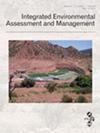How can machine learning inform about chemical risks in circular textiles?
IF 8.4
4区 环境科学与生态学
Q2 ENVIRONMENTAL SCIENCES
引用次数: 0
Abstract
Hazardous chemicals in textiles represent a serious health issue. This is mainly due to missing data on the used chemicals and/or on their hazard, which prevents proper chemical risk assessment. Although identifying and filling these data gaps is crucial, the myriad chemicals used for textile production and multiple data sources make it extremely difficult to manually collect and process all the data. Here, we propose a machine learning-based approach to tackle this issue. First, we identify the relevant sources and data that can be analyzed with machine learning. Then, we propose knowledge graphs as a tool to organize and analyze the data. We finally provide specific examples and detail the expected outcomes of our approach.
机器学习如何告知循环纺织品中的化学风险?
纺织品中的危险化学品是一个严重的健康问题。这主要是由于缺少关于使用化学品和/或其危害的数据,从而妨碍了适当的化学品风险评估。尽管识别和填补这些数据空白至关重要,但用于纺织品生产的无数化学品和多个数据源使得手动收集和处理所有数据变得极其困难。在这里,我们提出了一种基于机器学习的方法来解决这个问题。首先,我们确定可以用机器学习分析的相关来源和数据。然后,我们提出了知识图谱作为组织和分析数据的工具。最后,我们提供了具体的例子,并详细说明了我们的方法的预期结果。
本文章由计算机程序翻译,如有差异,请以英文原文为准。
求助全文
约1分钟内获得全文
求助全文
来源期刊

Integrated Environmental Assessment and Management
ENVIRONMENTAL SCIENCESTOXICOLOGY&nbs-TOXICOLOGY
CiteScore
5.90
自引率
6.50%
发文量
156
期刊介绍:
Integrated Environmental Assessment and Management (IEAM) publishes the science underpinning environmental decision making and problem solving. Papers submitted to IEAM must link science and technical innovations to vexing regional or global environmental issues in one or more of the following core areas:
Science-informed regulation, policy, and decision making
Health and ecological risk and impact assessment
Restoration and management of damaged ecosystems
Sustaining ecosystems
Managing large-scale environmental change
Papers published in these broad fields of study are connected by an array of interdisciplinary engineering, management, and scientific themes, which collectively reflect the interconnectedness of the scientific, social, and environmental challenges facing our modern global society:
Methods for environmental quality assessment; forecasting across a number of ecosystem uses and challenges (systems-based, cost-benefit, ecosystem services, etc.); measuring or predicting ecosystem change and adaptation
Approaches that connect policy and management tools; harmonize national and international environmental regulation; merge human well-being with ecological management; develop and sustain the function of ecosystems; conceptualize, model and apply concepts of spatial and regional sustainability
Assessment and management frameworks that incorporate conservation, life cycle, restoration, and sustainability; considerations for climate-induced adaptation, change and consequences, and vulnerability
Environmental management applications using risk-based approaches; considerations for protecting and fostering biodiversity, as well as enhancement or protection of ecosystem services and resiliency.
 求助内容:
求助内容: 应助结果提醒方式:
应助结果提醒方式:


